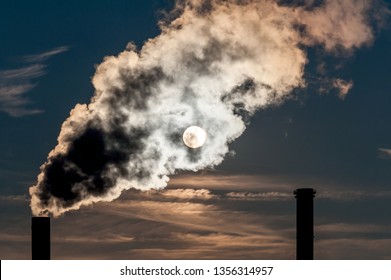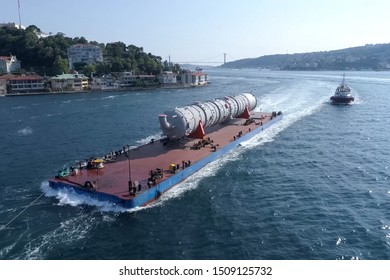Essential for Life : Air and water
Air is present all around us . we Cannot see or smell air but can feel its presence when it moves . Air is necessary for the existence of life .
Atmosphere
Our earth is surrounded by a blanket of air called atmosphere . Atmosphere is present many kilometer above the earth's Surface . As we go higher up in the atmosphere, the amount of air become less .that is why, mountaineer take oxygen cylinders with them . the gravity pulls the layers of airs towards the surface of the earths Layers of the atmosphere The atmosphere has the five main layers
1. Troposphere : It is the lowest layer . all the changes in weather occur here .
2.Stratosphere: It is present above the troposphere ozone gas present in this layers, absorbs the harmful UV rays coming from the sun and prevents them reaching the earths surface. These rays are very harmful to us
3.Mesosphere: It is the third layer Meteoroids and small rocks moving in space are burnt out here . Thus , They do not reach the earths
4.Thermospheres : It is the fourth layers . Space shuttles in this layer.
5.Exospheres : It is the outermost layer.


Importance of atmosphere:
1.All living things (plants and animals) get oxygen to breaths from the atmosphere .
2.It maintain the temperature on the earths for the survival of living things
3. it burns the meteoroids before they rich the earth's surface .
4.It protects us from the the harmful radiations .
Composition of air
Air is a mixture of many gases . about 78 % nitrogen, 21% oxygen and 1% other gases like , neon , argon, carbon dioxide and ozone present in the air . it also contains water vapor and dust particles .
1.Oxygen:
All organism need oxygen for breathing oxygen is also necessary for burning .
2.Nitrogen: All organism need nitrogen for their growth . But they cannot use nitrogen directly from the air .Most of the plants take nitrogen from the soil. nitrogen is added to the soil through fertilizers. Animals get nitrogen from the food food they eat. nitrogen does not support burning .
3.Carbon Dioxide : Green plants use carbon dioxide to make their food . it is also used in the fire extinguishers to put out fire .


4. Water Vapour:
Water vapor is formed by the evaporation of water from oceans , rivers and lakes because of the heat of sun. The amount of water vapor present in the air is called humidity . The Water vapor can change the weather
5. Other Gases:
Air also contains hydrogen , ozone, helium, neon, argon, etc.
Properties of air :
1.Air Occupies space
2.Air has Mass
3.Air Exerts pressure : We know that air occupies space and has mass. anything that has mass exerts pressure . So , air also exerts pressure . The pressure exerted by air is called atmospheric pressure .
4.Air can be Compressed: Since the molecules of air of gases in air are far apart from on another, air can be compressed and pushed into small spaces
5. Air Expend on heating and Contracts on cooling:
When air is warmed ,it expands and takes up more space , on the other hand , when air is cooled, it shrinks and occupies less space .
Importance of air pressure : Air is pressure helps in the every day life like in filling up a syring and a fountain pen, drinking with straw and using droppers. when you drink juice with a straw , the air inside the straw is removed while sucking. the pressure of air inside the straw becomes less .The air pressure outside at the surface of the juice is more . Air pressure on the surface of the juice then forces the juice to move up the straw . The dropper also works in the same way.
Water
All organism need water . Three -fourths of our earths surface is covered with water Only 3% of total available water can be used for drinking .97% of water is in the oceans . It contains salts and cannot be used for drinking .


How we get Water
We Get water from rivers, ponds, lakes and rains. We also get water from the ground by using wells, hand pumps, etc. The water in the lake, river , ponds etc., is not pure .Many things like dirt's , mud and germs are mixed with water and make the water unfit for use. The substances that make the water unfit for use are called impurities impurities are of two types - Soluble and insoluble
1.Soluble impurities : The impurities that get dissolved in water is called soluble impurities . For Examples , Salt of potassium and magnesium .
2.Insoluble impurities : The impurities that do not get dissolved in water is called insoluble impurities . for examples , Sand and Mud.
Removal of impurities from water :
1.Insoluble impurities like sand can be removed by using the following methods:
(a) Sedimentation : in this methods a mixture of water and insoluble impurities is allowed to stand undisturbed in a container for some times . The heavy insoluble impurities settle down at the bottom of the container . this layer of impurities is called sediment . when the impurities settle down, clear water is left above the layer of impurities . This process is called sedimentation.
(b) Decantation: After sedimentation the clean water is poured gently int a separate container without disturbing the sediment of impurities the process is called decantation .
The rate of sedimentation can be increased by adding chemicals like alum.This is called loading.
(c) Filtration: This method is used to separate water from insoluble impurities like mud and sand by using a filter paper.To filter a mixture of water and sand, a cone of filter paper is made and kept inside a funnel. the mixture is poured into the funnel. sand does not pass through the filter paper and remains behind on the filter paper. this is called residue.The clear water comes out of the filter paper and is collected in the flask below the funnel. this is called filtrate. this method of purifying water is called filtration.
2. Removal of Soluble Impurities
Soluble impurities can be removed by the following two methods:
(a) Evaporation: In this method, the solution containing soluble impurities like salt is heated. After some time, water gets evaporated (changes into steam) and the impurities are left behind.
(b) Distillation: Both impurities and pure water are obtained in the process of distillation. in distillation, impure water is heated in a flask. on heating, water changes into steam and impurities are left behind in the flask. steam passes through the condenser.
Here, it cools and changes into water again. this water is pure and is collected in a separate flask.


Impure water is harmful to us and leads to many diseases. so, we must drink pure water. we can purify water by using the following methods:
1. Boiling: Water is heated for 10minutes. boiling kills the germs present in water and makes the water pure. it is the simp0lest way to purify water.
2. Chlorination: Addition of chlorine tablets in water to kill germs and to make water pure is callled chlorination.
3. Water Purifier: Nowadays,electrical water purifier is used to get pure water. in most of the houses, RO water purifier is used.
Soluble impurities can be removed by the following two methods:
(a) Evaporation: In this method, the solution containing soluble impurities like salt is heated. After some time, water gets evaporated (changes into steam) and the impurities are left behind.
(b) Distillation: Both impurities and pure water are obtained in the process of distillation. in distillation, impure water is heated in a flask. on heating, water changes into steam and impurities are left behind in the flask. steam passes through the condenser.
Here, it cools and changes into water again. this water is pure and is collected in a separate flask.

PURIFICATION OF DRINKING WATER
Impure water is harmful to us and leads to many diseases. so, we must drink pure water. we can purify water by using the following methods:
1. Boiling: Water is heated for 10minutes. boiling kills the germs present in water and makes the water pure. it is the simp0lest way to purify water.
2. Chlorination: Addition of chlorine tablets in water to kill germs and to make water pure is callled chlorination.
3. Water Purifier: Nowadays,electrical water purifier is used to get pure water. in most of the houses, RO water purifier is used.
No comments:
Post a Comment